Get to Know a Game Writer
Jo Berry answers our questions on what it’s like to write for AAA video games including her latest, Star Wars™: Squadrons.
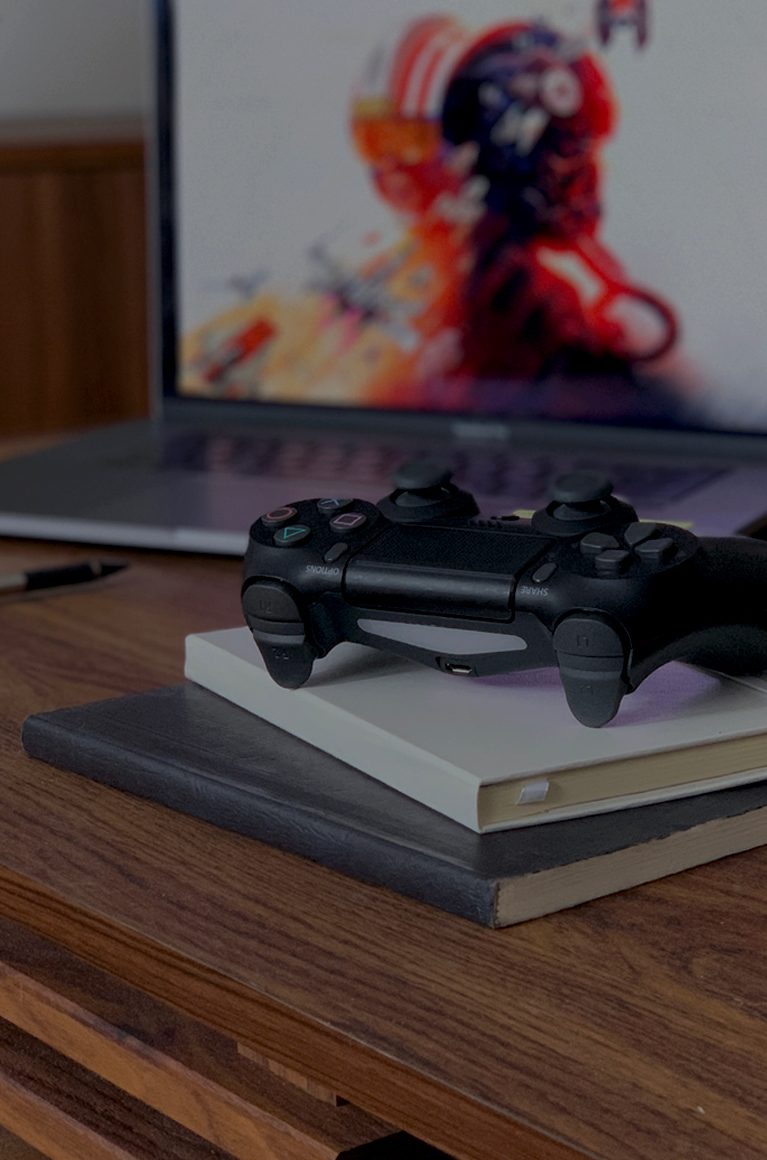
1. Can you introduce yourself?
My name is Jo Berry, and I’ve been writing for games since 2008. I started out at BioWare Austin working on Star Wars™: The Old Republic™, eventually working on RPGs like Dragon Age™: Inquisition and Mass Effect™: Andromeda. After transferring to Motive, I was the initial writer on Star Wars™: Squadrons: I conceived the campaign and characters, worked on multiple social conversations, and wrote about half of the missions and several cinematics. I’m also a published short story writer and I have an MA in Creative Writing.

2. How did you become a game writer?
I’ve always loved playing games, but I really felt the itch to start making games and creating worlds when I played the first Mass Effect™. I was finishing my MA and thinking about what I wanted to do next, when I saw a letter on the webcomic Penny Arcade from the lead writer of Star Wars™: The Old Republic. He was looking for new writers, so I decided to try my luck. Every game writer I’ve met has a very different path into the industry -- it’s always interesting to hear how they got there.
3. What does your average day look like?
I work mostly with Level Design, so I often start with Level Design standups. Throughout the day, I might have meetings with Cinematics, narrative designers, or artists as we build the story and characters, and keep the narrative vision consistent. In between, I work on the current writing needs for the project, usually documentation, dialogue, or rewrites and polishing. But I might be asked for writing support at any point: some sample dialogue to test out a conversation system, questions about the game’s lore for a weapon or ability, a call for help with marketing copy... I never get bored!
4. What’s the process of writing a game from start to finish?
We start in pre-production, where we brainstorm overall story ideas and character concepts, and do any necessary research. From there, we drill down into specific missions or chapters, working with level designers to write execution documents that outline every beat. We also document character arcs and any personal missions. Big cinematic moments are ideally written early so that Cinematics has time to plan and budget performance capture sessions.
When scenes go for Performance Capture (PCAP), a writer might join those sessions for any on-set rewrites and narrative support. Star Wars™: Squadrons was the first project where I got to go on set, and I had a great time getting to know the actors, learning the process from our director, and seeing our characters come to life. I was able to bring a lot of little characterising details and ideas back to the page from there.
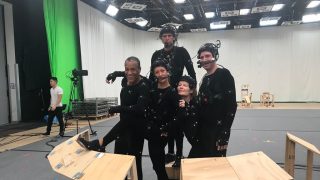
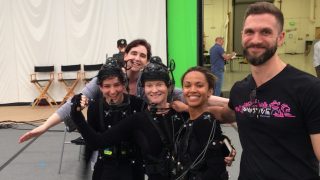

Our priority writing on a game is dialogue for missions and cinematics. We run table reads and peer reviews to polish as we go, then it’s submitted for editing, localisation, and Voice Over (VO) recording. Towards the end of a project, after VO is finalised, we work on non-VO text like codex entries, text logs, or item descriptions. We also spend time playing the game and running narrative Quality Assurance (making sure the right lines or events are playing in the story).
5. What are the main challenges in this line of work?
Two immediately come to mind. First, there’s tech limitations. You have to balance the story you’re telling with the capabilities of the game engine, the scope of the project, and the time of your fellow developers. A scene that would be trivial in a film- for example, a crowd scene, or a conversation where characters touch each other- can require months of work in a game, so your story must account for that. Plus, the shifts in scope that are common to any game’s production mean you have to stay flexible to keep the story and characters consistent in the final product.
Second, you need to constantly stay aware of the player’s experience. Game writing isn’t about you getting to tell your perfect story: you’re crafting a participatory experience for strangers according to the creative director’s vision. Gameplay and narrative need to work seamlessly together so the player feels immersed and the world feels consistent. It takes a lot of communication.
On the Star Wars™: Squadrons campaign, there were specific narrative challenges: telling an immersive story from two opposing first-person perspectives, working with a limited number of locations, tech limitations around the conversation editor, and making sure key narrative moments didn’t get missed while in the cockpit, to name a few. It took writing, cinematics, level design, audio, and narrative design working together to address them.
Seeing a world or a fully fleshed-out character come to life, when it started from your words on a page, is just amazing — there’s nothing like it.
6. What do you like about being a game writer?
Seeing a world or a fully fleshed-out character come to life, when it started from your words on a page, is just amazing — there’s nothing like it. I’ve always loved the idea of visiting new worlds and this is the closest you can get. And it’s very rewarding when players see themselves in the characters you make.
Plus writing for games means you get to work with incredibly talented people. I learned a lot working on our Star Wars™: Squadrons - ‘Hunted’ CG Short with Writer and Director Neel Upadhye, and I got a front-row seat to ILM’s process and concept art too. That was one of my favourite experiences on the game.
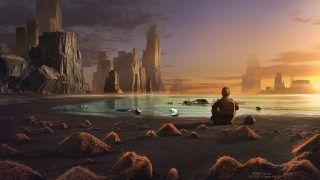
Courtesy of Industrial Light & Magic.
Watch the full Star Wars™: Squadrons - ‘Hunted’ CG Short here (courtesy of Lucasfilm Ltd.).
7. Where do you pull inspiration from?
At work one of my favourite sources is concept art. Seeing what our artists are working on always gets my brain going: I got an entire short story out of the key art for our Star Wars™: Squadrons - ‘Hunted’ CG Short.
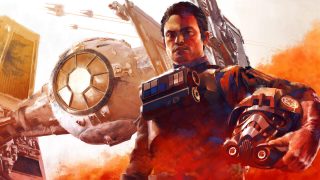
Courtesy of Lucasfilm Ltd.
Outside of that I love popular science and nature documentaries. I also listen to true crime podcasts, and I read a lot of politics and history: everything from detective novels set in ancient Rome, to body snatching in Edinburgh in the 1800s. You ‘meet’ some fascinating people...
8. What are the advantages that come with having more women in your position?
Games have a massive reach and cultural impact, so the stories we tell and the characters we create can make a real difference in people’s lives. Having a broad spectrum of voices in the writer’s room, including women and especially women of colour, allows us to tell new stories and create new characters that speak to our audience and explore fresh territory. A more diverse room can catch mistakes that might be overlooked from a narrower perspective, and highlight ideas that deserve more attention.
Women have always been key figures in programming and in games. We live in a time when it’s even more important to recognise that, to support female developers, and hopefully to see the diversity of game developers match the diversity of our audience.
Want to read more from Jo? Check out her latest Star Wars™: Squadrons short story, “Count to Three” here.
Lucasfilm, the Lucasfilm logo, STAR WARS and related properties are trademarks and/or copyrights, in the United States and other countries, of Lucasfilm Ltd. and/or its affiliates. © & ™ 2021 Lucasfilm Ltd. All rights reserved.

